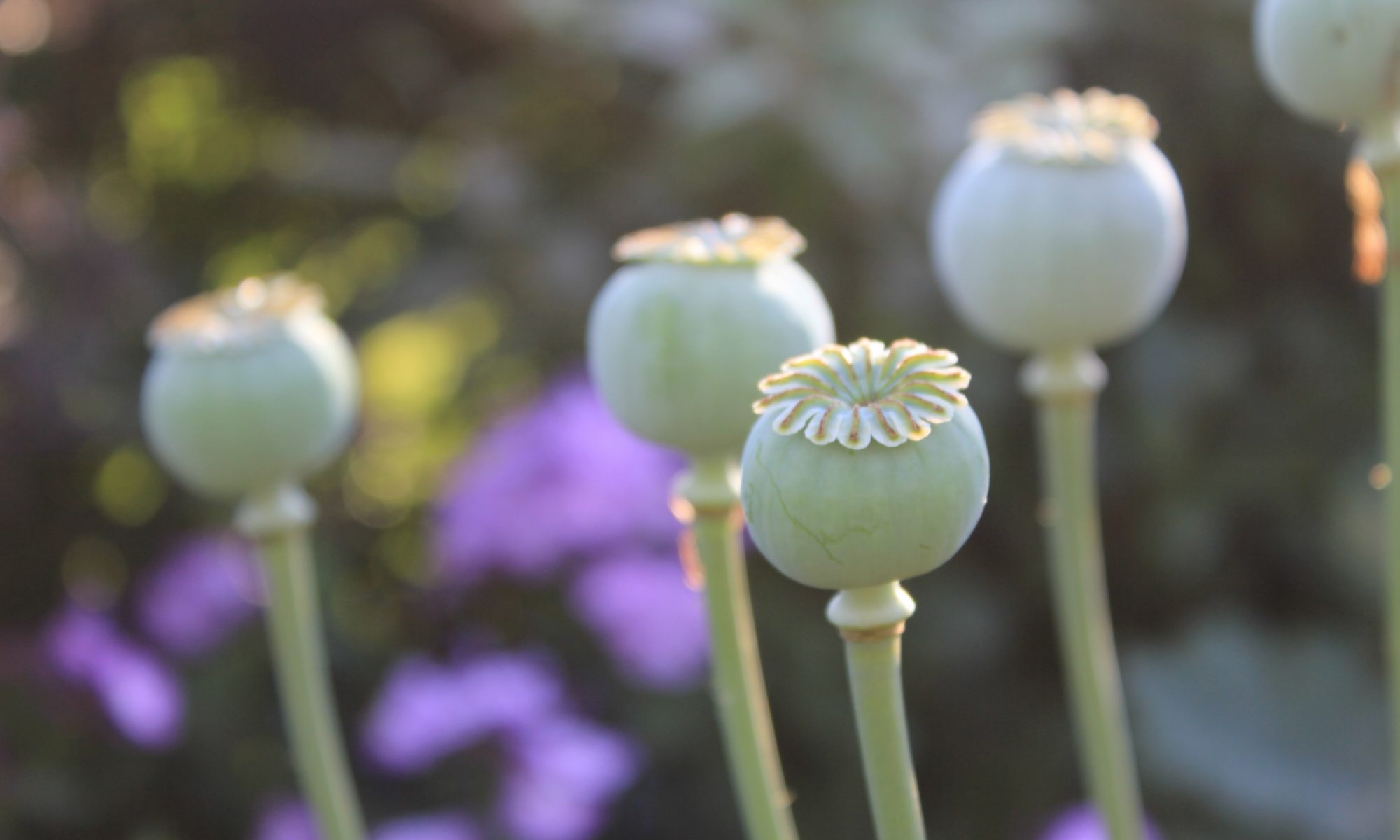With many options to choose from, Jo Arnell talks us through the basics
A dreamy meadow full of poppies, cornflowers and ox-eye daisies is a lovely thing to behold, but perhaps more fantasy than reality in the countryside these days – and to bring us down to earth still further, a patch of cornfield annuals is only one type of wildflower meadow. Natural meadows can be a complicated tapestry of wildflowers and to mix it up even more, since meadow gardening became a thing about 30 years ago, a diversity of relaxed, romantic and pictorial, or faux meadows have appeared to inspire and confuse us. If you have a patch of spare ground, would like to encourage wildlife, or just want to relax your mowing regime and fancy growing some flowers among the grass, there will be a meadow scheme to suit you.
Annual cornfield meadows
Meadows were once just a part of the rural landscape, a taken for granted backdrop symbolic of summer in the countryside. Traditional regimes in hay meadows and crop fields allowed for poppies, cornflowers, and other annual flowers to flourish, as removing the hay/corn each year kept the soil less fertile and stopped the grasses becoming too dominant. Sheep or cattle were allowed on to graze after the fields were cut, trampling seeds down into the soil as they did so, and the cycle continued.
The intensification of agricultural practices has lead to the disappearance of cornfield meadows. Aside from the use of chemical fertilisers, pesticides and herbicides, it is also common for follow-on crops to be sown in the autumn-winter wheat, oilseed rape, or green manures like clover and vetches. This means the traditional rhythms that the flowers fell into line with hundreds of years ago have been disrupted and as a consequence most have disappeared, or have been relegated to the field margins.
“Traditional rhythms that the flowers fell into line with hundreds of years ago have been disrupted and as a consequence most have disappeared, or have been relegated to the field margins”
In recent years field edges have been extended, wildlife corridors have been instated and many farmers are doing their bit for biodiversity. While this is fine for perennial plants and some meadows, it won’t help the cornfield annuals. This also explains why many of us can’t grow annual wildflower meadows successfully; we aren’t making hay and we don’t have enough sheep roaming our gardens.
You’ll be relieved to hear that there are ways to replicate an annual meadow without resorting to ancient farmland practices and renting livestock, but, even so, establishing a mini meadow containing cornfield annuals is not always an easy task. Wildflowers have adapted to thrive in difficult conditions and in poor soils. Our garden soil is often too rich for them and our lawn grasses too dominant. You can strip off the lawn and re-sow with a meadow mix, which will contain more delicate grass species and a mix of wildflowers (some of which will be happy in your space, depending on your soil type and aspect). You may well get a good rate of germination in the first year, but if you want to make sure that annual wildflowers will grow again, they must be allowed to set seed in the autumn, so be patient and wait until the end of July or beginning of August before cutting. Leave the cut top growth on the ground for a few days to encourage seeds to disperse, then rake it up and remove to ensure that the soil fertility stays low.
Perennial wildflower meadows
A perennial is a plant that has a lifespan of more than a year or two. It will keep reappearing (in theory) each spring. Many of our native perennial wildflowers have gradually turned into cottage garden favourites such as Geraniums (cranesbill), Foxgloves, Achillea (yarrow) and Aquilegia (columbine). These plants will manage in meadow situations, but again the grass will out-compete them if it’s not carefully managed. Perennials don’t germinate as readily from seed as annuals, so a good way to start a perennial meadow is by planting young plug-plants grown in modules. These will establish more reliably and should flower in their first or second season (depending on initial size and vigour). Perennial meadow plants flower around midsummer and so the meadow can be mown in early spring, then in late summer and early autumn once the flowers have faded.
Yellow Rattle
There is a way of preventing the grass from out-competing meadow flowers by growing a plant called Yellow Rattle (Rhinanthus minor). This little plant is partially parasitic on grass and will weaken it, allowing wildflowers a foothold. Most meadow mixes now contain Yellow Rattle seed, but it’s worth seeking out locally produced seed that will be regionally adapted. It is an annual, best sown in the autumn, or planted as plugs in spring.
Pictorial Meadows
A pictorial, or faux meadow, like those seen in the Olympic park in 2012, uses non-native annuals and short lived perennials to create a relaxed and wafting meadowy look. The principals are broadly the same – you need to make sure that any grasses are sparse and won’t swamp the delicate annuals, or just use flowers and don’t include any grass at all. April is a great time to sow a pictorial meadow, as seeds of plants like Cosmos should germinate directly once the weather is warm enough. To be on the safe side it is worth sowing a few of the less hardy varieties as plugs to plant out once the danger of frost is past, but this will make the process more labour intensive. A wide range of annuals can be used to make a pretend meadow; when we grew one a few years ago at one of my courses, I bought a few packs of cornfield annuals and mixed in seeds of other commonly available annuals. I put them all in a bucket with some sand prior to sowing – they need to be sown sparingly and the sand helps to spread them out when you’re broadcast sowing by the handful.
You’ll need to prepare the ground; remove all weeds and make the soil ready by raking it to a fine tilth (it should look like crumble topping). Scatter seeds over the surface of the soil and then rake over lightly. It won’t matter if you tread
on it a bit – just as the sheep in the stubble fields press the seeds into the ground, it’s important that the seed is in contact with the soil. Within a few weeks it will be looking green with new growth and should burst into meadowy splendour by early July. Cut the meadow once the flowers have faded and set their seed, remove the top growth once the seed has dispersed and is frost tolerant, hardy seeds will germinate again next year. You may want to top up with more of the more delicate plants and weed out the thugs after the first year.
The New Perennial Garden Style
A wild ‘prairie’ style can be achieved by growing ornamental grasses such as Miscanthus, Stipa and Calamagrostis instead of meadow grass and mixing in late flowering perennials. Daisy flowers – Asters, Heleniums and Rudbeckias – work well, nectar rich Sedums and tenacious plants that would be thugs in a more polite border, such as Persicaria, Crocosmia and Phlomis, will spread to create great drifts or waves of colour. The advantage of using ornamental grasses is that they look good all through the winter, especially when back lit by the low sun, with the seed heads of the perennials silhouetted against them. This style of gardening works best on a large scale and is becoming popular in parks and larger spaces, as it is relatively low maintenance – the plants all get a severe haircut in the spring and off they go again.
Weeds
We tend to forget that many of our wildflowers fall into this category. Weeds are troublesome in our gardens because they’ve developed to survive in very difficult conditions out in the wild, competing with each other for survival. When they gatecrash into our gardens, they can’t believe their luck and so romp about in the rich soil, bullying our dainty garden centre plants and taking over. Eradicating them calls for vigilance, but this is harder in a semi-wild meadow situation, so it pays to remember that they are a wonderful resource for wildlife and that a few weeds in your meadow will add a bit of authenticity – a useful thing to say to visitors…
For details of Jo’s gardening courses visit hornbrookmanor.co.uk
or contact Jo on 01233 861149
Annuals suited to meadow situations ::
They will like sunny, free-draining positions and most are summer flowering
Annual poppies – grow either the field poppy, Papaver rhoeas, or the opium (P. somniferous). If they like your conditions they will spread around. Often pops up when ground is cultivated.
Cornflowers – available in a range of pastel colours and one really dark maroon cultivar, but the blue form is the most beautiful. Will self-seed.
Marigolds – cheerful orange daisy flowers, really easy to grow and another happy self-seeder.
Amni majus – a tame Cow parsley-type flower; tall, with large white lacy flowers
Orlaya grandiflora –another umbellifer, delicate umbels of white, shorter than Amni majus and not as invasive.
Larkspur – the annual Delphinium available in several shades of blue, mauve pink and white.
Nigella damascena (love-in-a-mist) – prolifically self-seeding, with ferny foliage and attractive seed heads, as well as flowers.
Cosmos bipinnatus – an easy half-hardy annual (not frost tolerant). Tall daisy flowers in white and shades of pink. It has good, ferny foliage and lasts well as a cut flower.
Cleome spinosa– an unusual tall half-hardy annual, sometimes called the spider flower, as the flower is somewhat spidery.
Sunflowers – available in colours other than yellow – this well known hardy annual makes a tall and cheerful addition and is also great for attracting wildlife.
TEST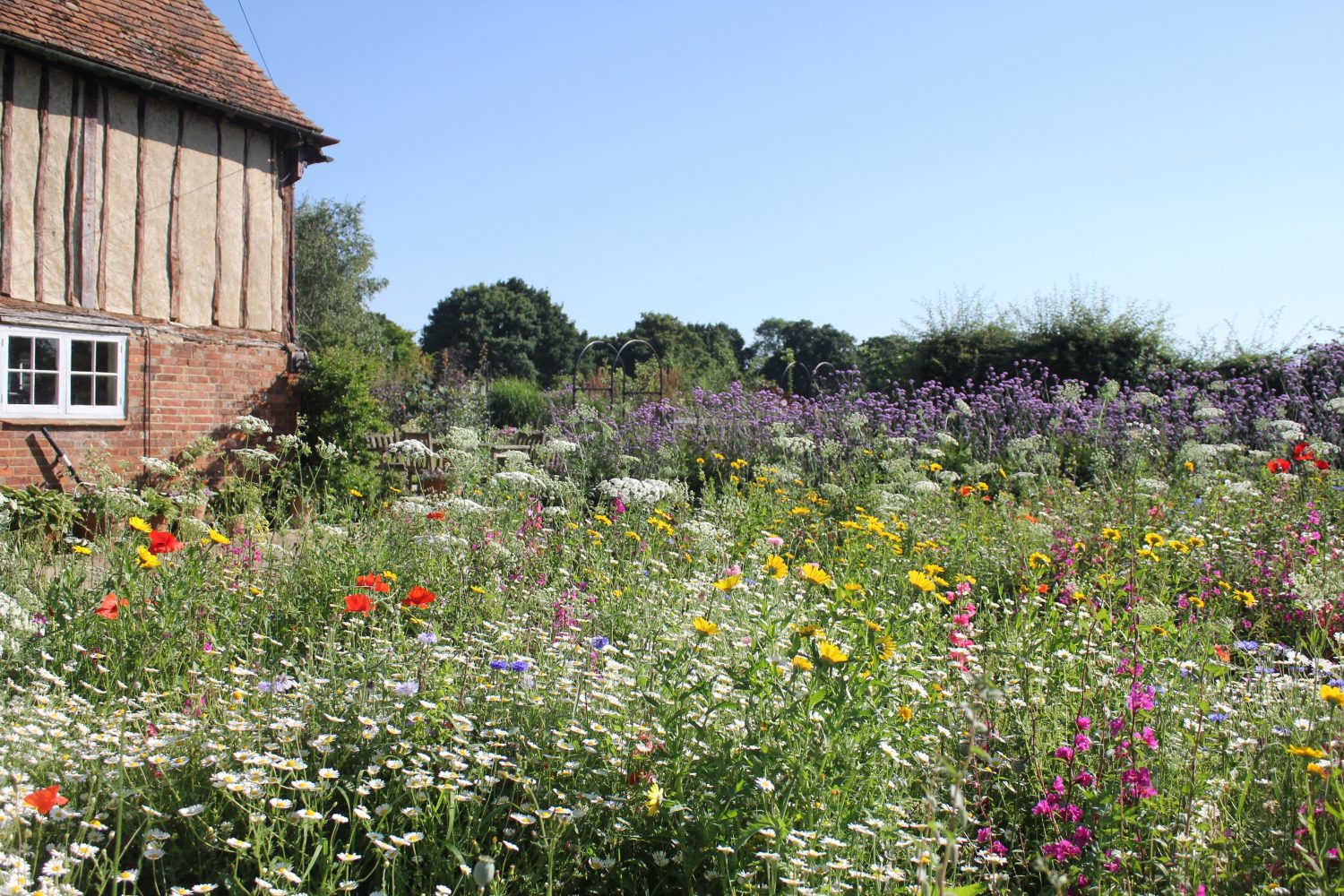
Pictorial meadow in Jo’s garden
TEST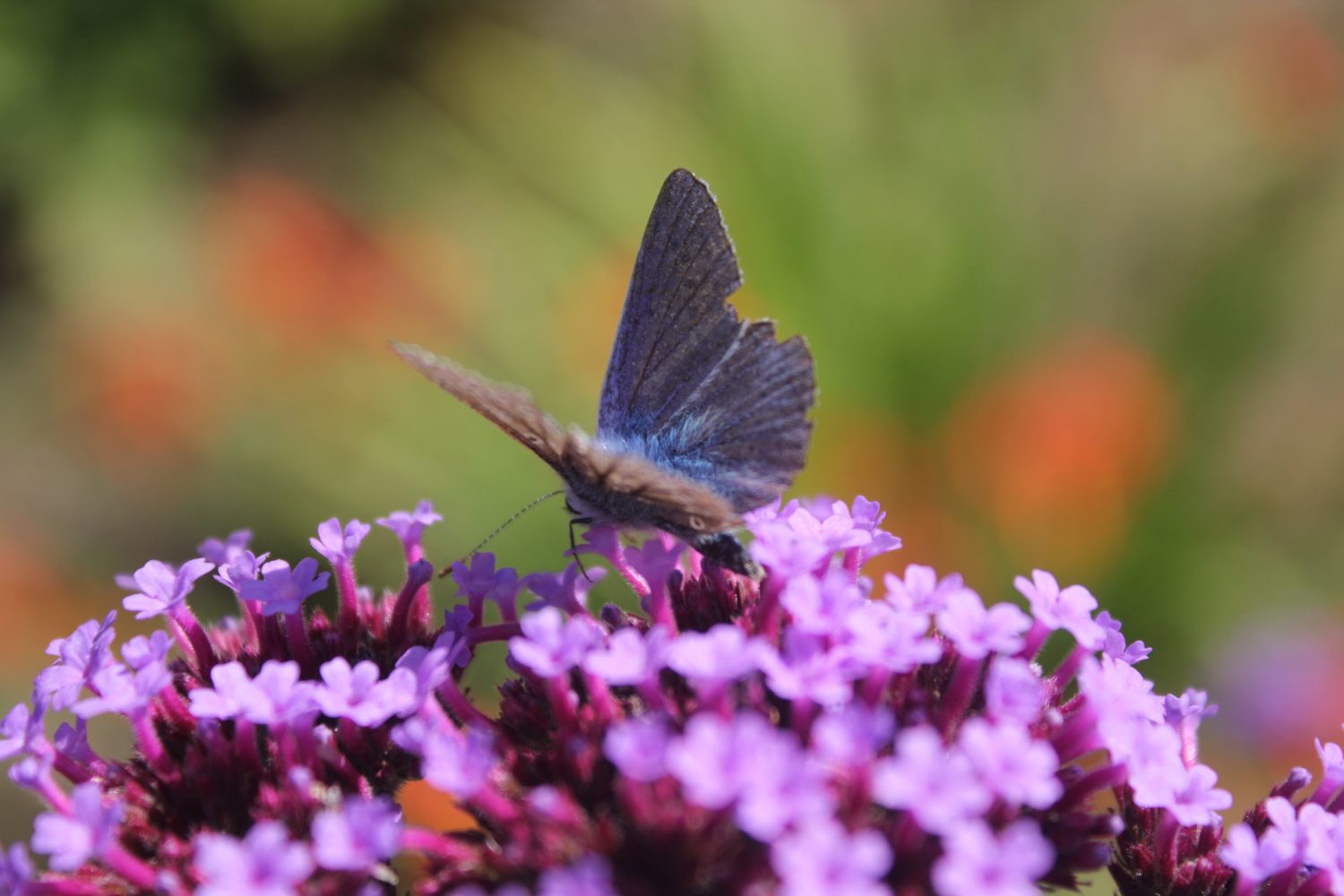
Butterfly on Verbena bonariensis
TEST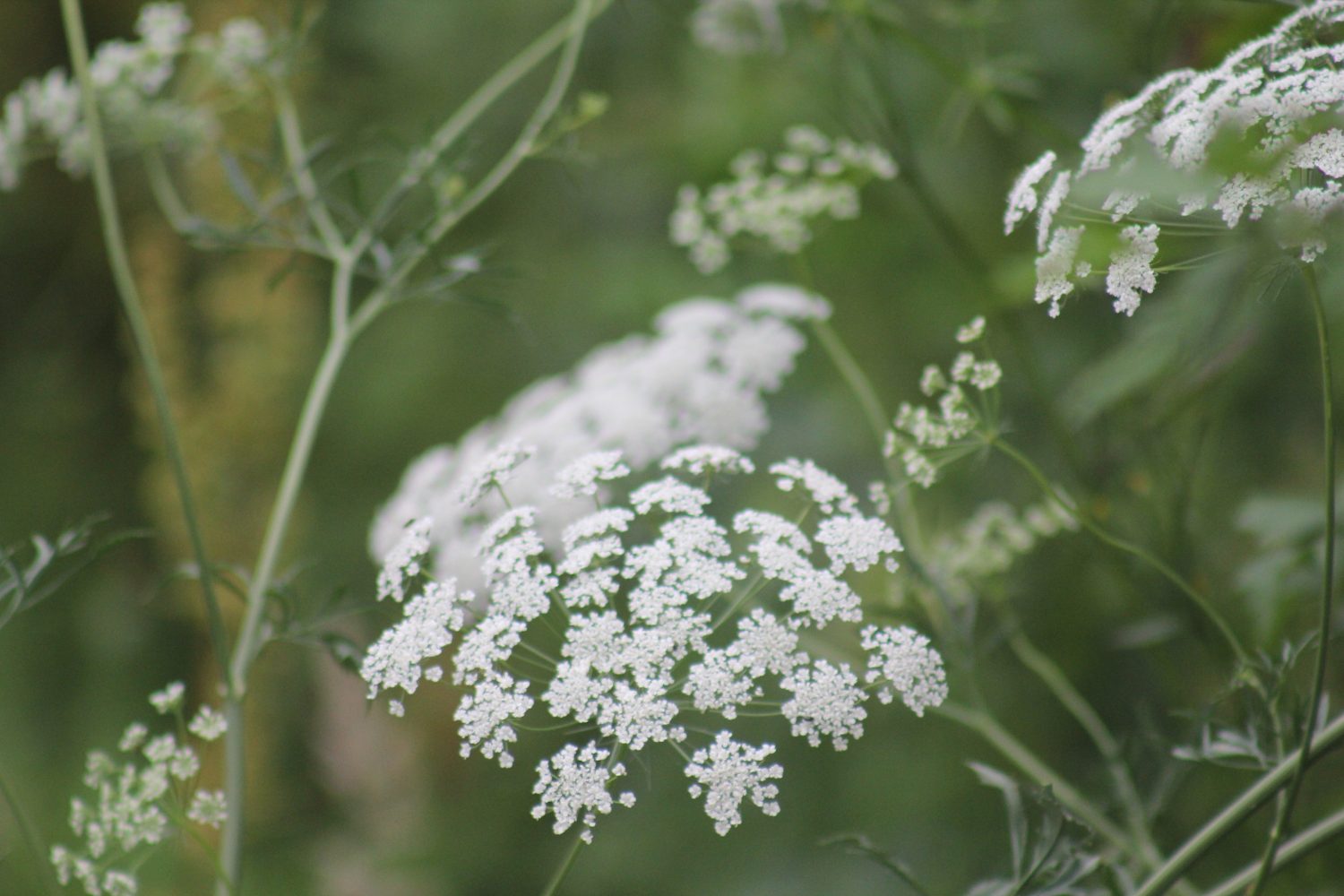
Cow parsley
TEST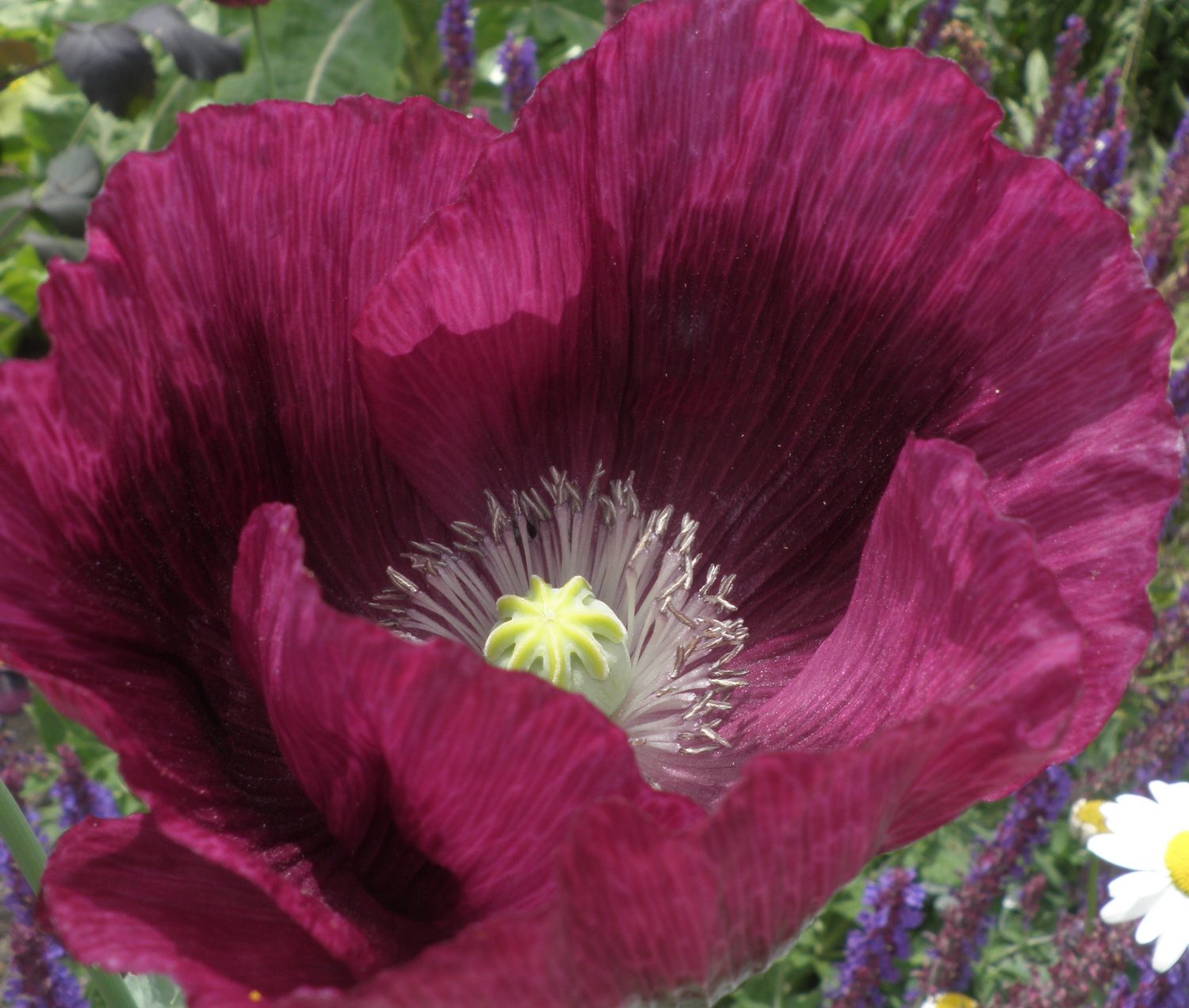
Opium poppy ‘Lauren’s Grape’
TEST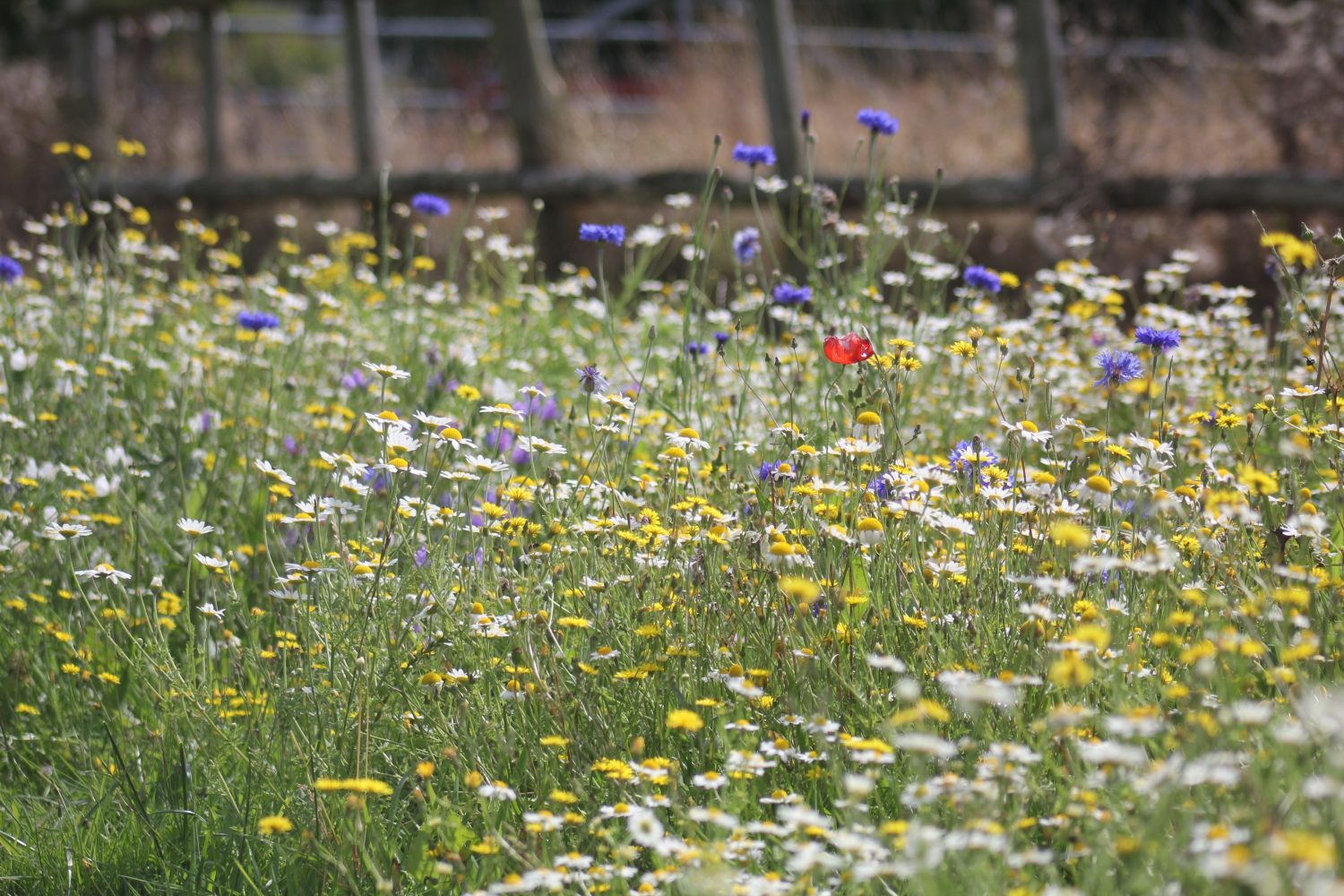
Cornfield annuals
TEST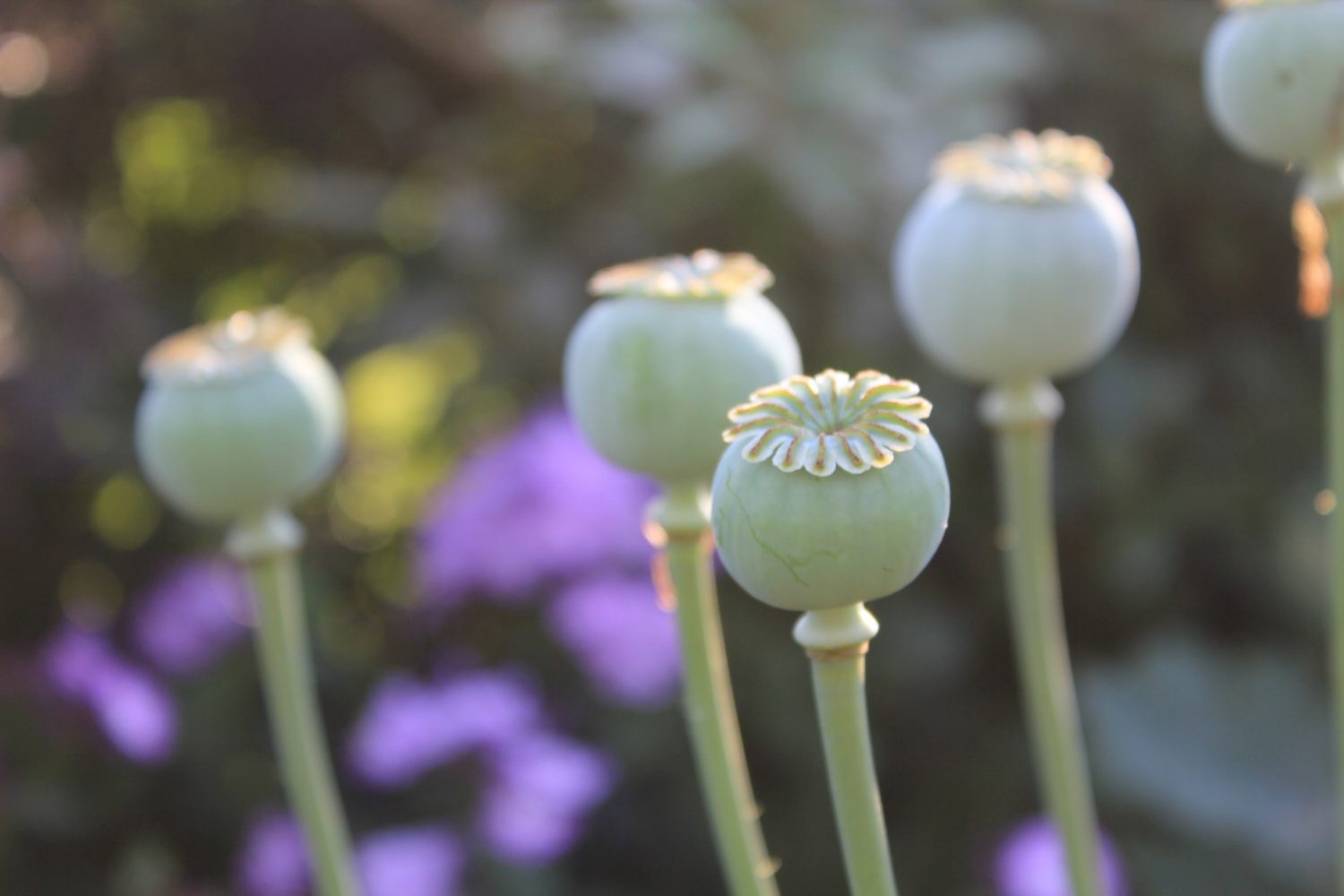
Poppy seed heads
TEST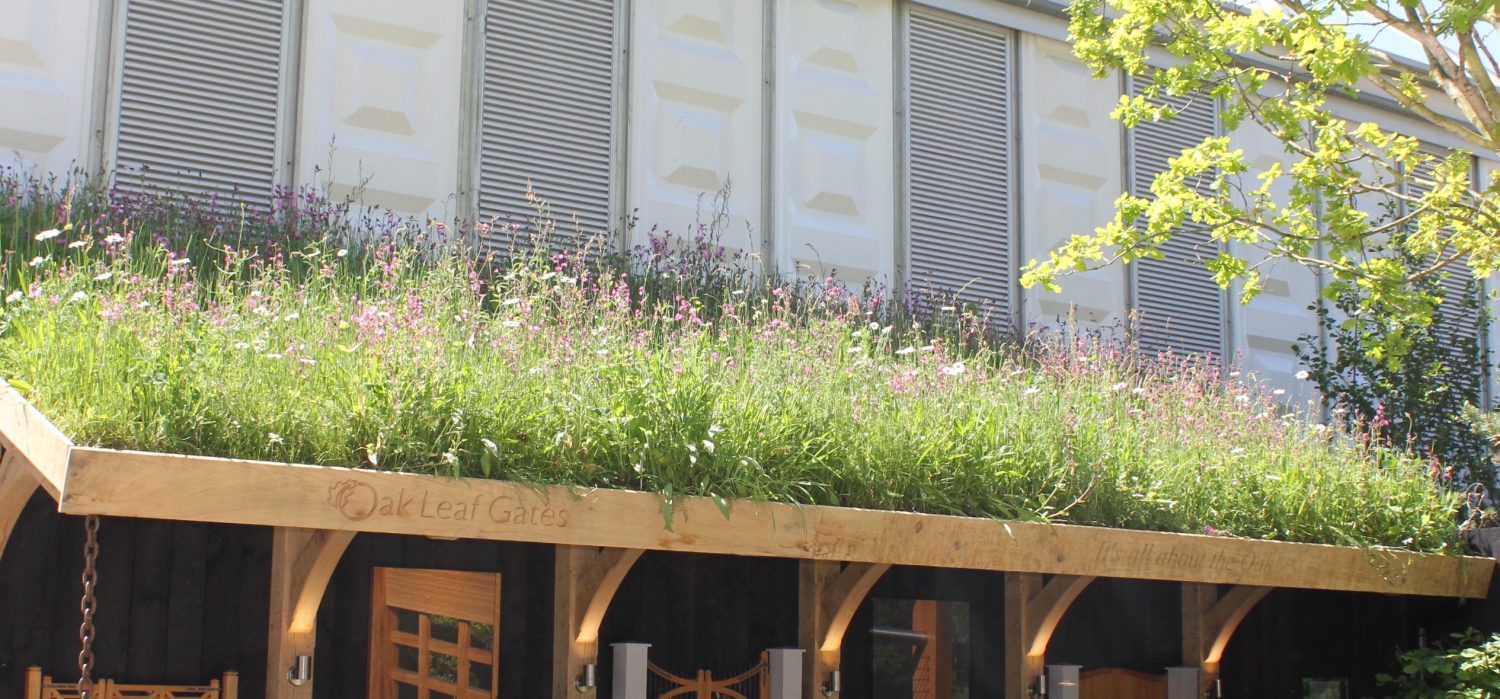
Roof top meadow
TEST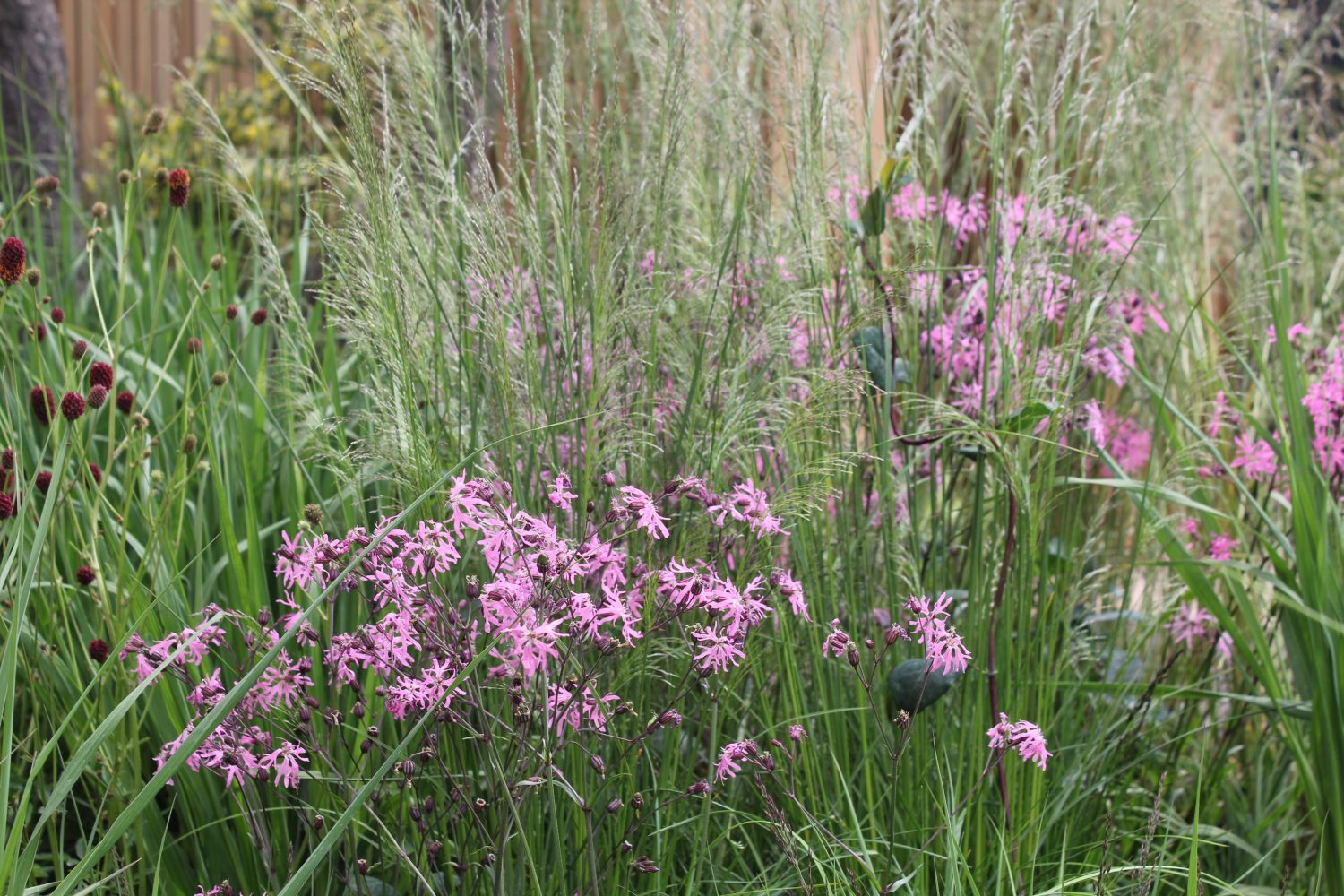
Ragged Robin and Burnet among grasses
TEST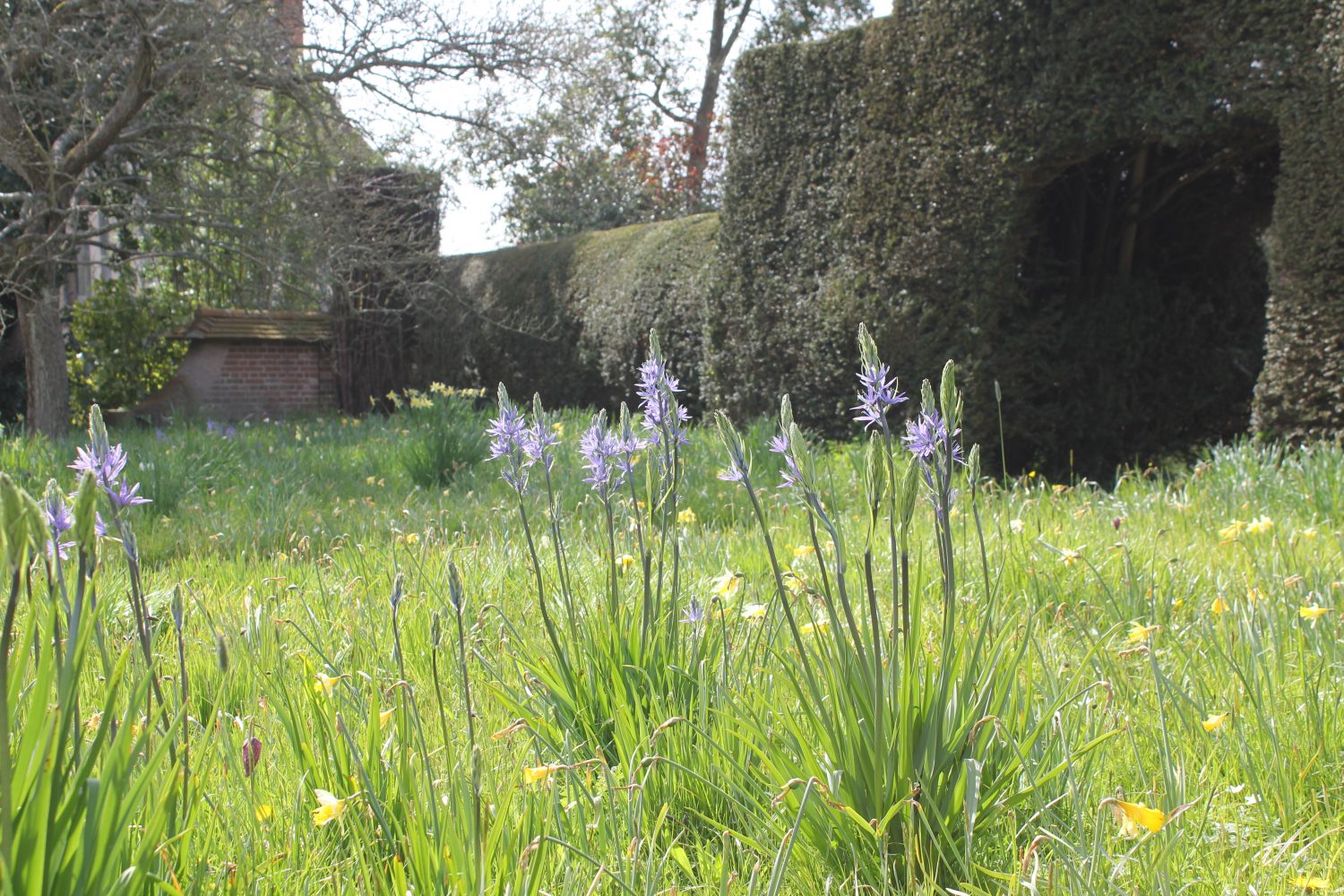
Spring meadows at Great Dixter
TEST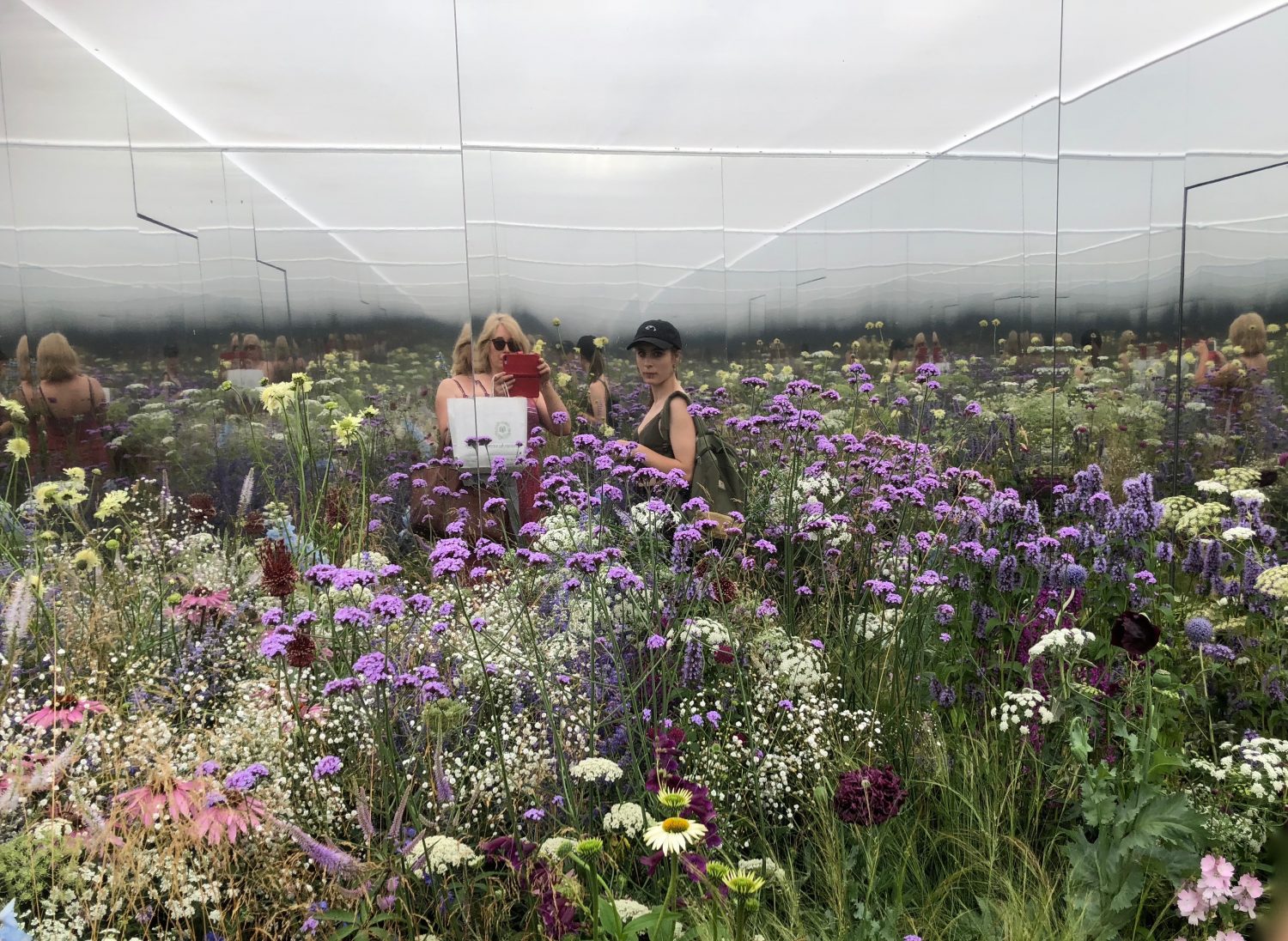
Hampton Court Flower show - meadow in a mirrored box by Alex Rainford-Roberts
TEST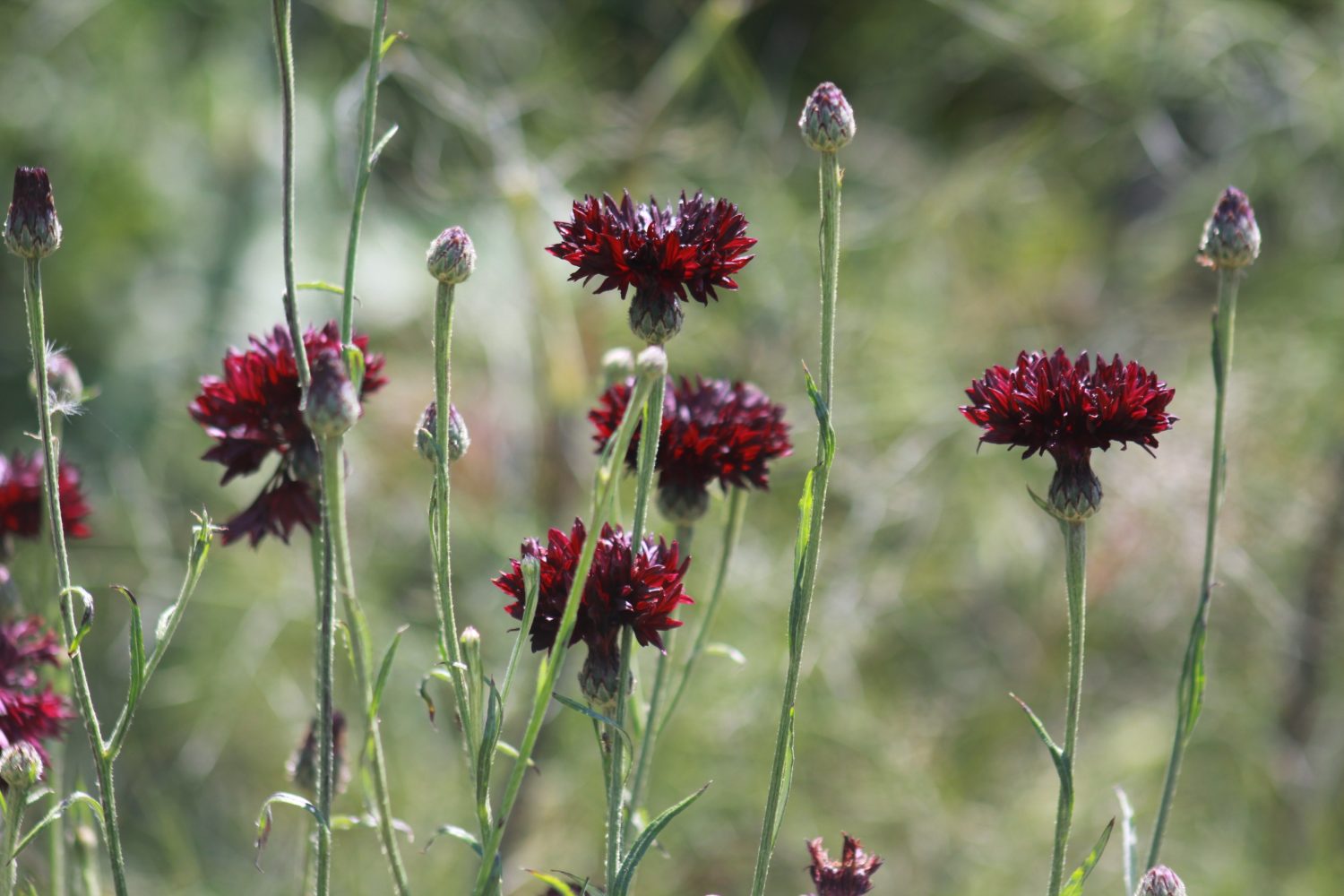
Cornflower ‘Black Boy’
You may also like
Go with the Flow
Sue Whigham shares some valuable new-to-gardening advice I’m sure that by now we should be used to the rain but I’m not entirely sure that we are. We had a dry, sunny day the other day and how everybody’s mood...
Farm Fables
Jane Howard gets to the bottom of why so many ponds have disappeared across the High Weald I have a new passion, almost an obsession, it’s about ponds. And there’s a distinct possibility I might become a bit of a...
Hedge Issues
Sue Whigham takes a meander along nature’s verdant and vital corridors Recently the BBC’s Today programme carried a feature about England’s hedgerows which created a lot of interest among listeners. On the strength of that, Martha Kearney interviewed one of...
